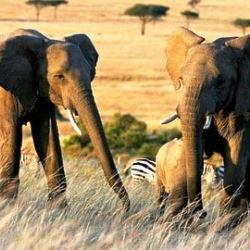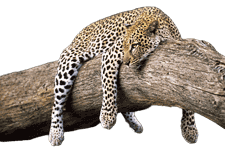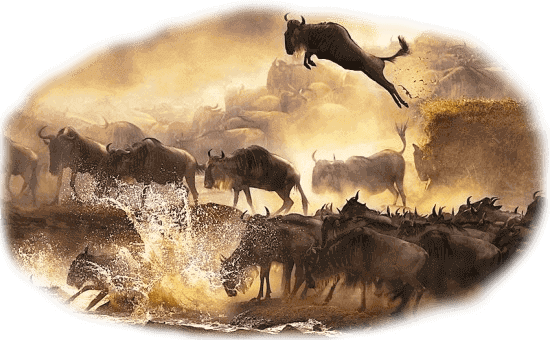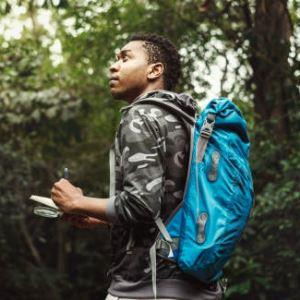 Embarking on a safari in Kenya is a dream come true for many Italian travelers seeking awe-inspiring wildlife, dramatic landscapes, and unforgettable cultural encounters. Kenya offers a seamless blend of adventure and relaxation, making it an ideal destination for both first-time visitors and seasoned explorers from Italy. With its welcoming people, well-established tourist infrastructure, and abundance of natural wonders, the country provides the perfect setting for an extraordinary travel experience. The most popular period for safari adventures typically spans from June to October, when the dry season provides ideal conditions for wildlife viewing. During these months, animals gather around water sources, making sightings of elephants, lions, leopards, and even the elusive cheetah more frequent. Italian tourists often time their trips to coincide with the Great Wildebeest Migration in the Masai Mara, one of nature’s most breathtaking spectacles. Top safari destinations include the world-renowned Masai Mara National Reserve, known for its high concentration of wildlife and stunning savannah scenery. Amboseli National Park is another favorite, offering panoramic views of Mount Kilimanjaro and large elephant herds. For those interested in birdwatching and unique ecosystems, Lake Nakuru and Samburu National Reserve provide diverse experiences that go beyond the classic safari. Preparing for a safari in Kenya involves more than just packing a camera. Italian visitors should plan to wear light, breathable clothing in neutral tones to blend into the environment. Health precautions such as Yellow Fever vaccination and malaria prevention are also advised. Entry into Kenya requires a visa, which can be easily obtained online through the eVisa system. For a smoother journey, many Italian travelers opt for guided safari packages, some of which include Italian-speaking guides and even Mediterranean cuisine. Cultural respect enhances the quality of a Kenyan safari. Italians are encouraged to learn a few Swahili greetings like "Jambo" (hello) and "Asante" (thank you) to connect with locals. When visiting traditional villages or local markets, it is customary to ask permission before taking photographs. Participating in cultural exchanges, trying local dishes like nyama choma (grilled meat), and supporting community artisans enrich the overall experience. For those seeking both adventure and cultural immersion, the best Kenya safari tours for Italian travelers offer a comprehensive and enriching way to explore the heart of East Africa. These tours are thoughtfully curated to provide a balance of thrilling game drives, serene landscapes, and meaningful cultural exchanges. Italian tourists can expect personalized service, multilingual guides, and itineraries that include iconic parks like Masai Mara, Amboseli, and Samburu. Accommodations often blend luxury with eco-conscious design, ensuring comfort while preserving the natural surroundings. Beyond the wildlife, travelers can engage with local communities, enjoy traditional Kenyan cuisine, and witness daily life in rural villages. From sunrise safaris to evenings around the campfire under the stars, each moment offers a deep connection to the land and its people. With thoughtful planning and an open mind, a Kenyan safari becomes much more than a vacation it's a once-in-a-lifetime journey that leaves lasting memories and a newfound appreciation for Africa's wild beauty.
Embarking on a safari in Kenya is a dream come true for many Italian travelers seeking awe-inspiring wildlife, dramatic landscapes, and unforgettable cultural encounters. Kenya offers a seamless blend of adventure and relaxation, making it an ideal destination for both first-time visitors and seasoned explorers from Italy. With its welcoming people, well-established tourist infrastructure, and abundance of natural wonders, the country provides the perfect setting for an extraordinary travel experience. The most popular period for safari adventures typically spans from June to October, when the dry season provides ideal conditions for wildlife viewing. During these months, animals gather around water sources, making sightings of elephants, lions, leopards, and even the elusive cheetah more frequent. Italian tourists often time their trips to coincide with the Great Wildebeest Migration in the Masai Mara, one of nature’s most breathtaking spectacles. Top safari destinations include the world-renowned Masai Mara National Reserve, known for its high concentration of wildlife and stunning savannah scenery. Amboseli National Park is another favorite, offering panoramic views of Mount Kilimanjaro and large elephant herds. For those interested in birdwatching and unique ecosystems, Lake Nakuru and Samburu National Reserve provide diverse experiences that go beyond the classic safari. Preparing for a safari in Kenya involves more than just packing a camera. Italian visitors should plan to wear light, breathable clothing in neutral tones to blend into the environment. Health precautions such as Yellow Fever vaccination and malaria prevention are also advised. Entry into Kenya requires a visa, which can be easily obtained online through the eVisa system. For a smoother journey, many Italian travelers opt for guided safari packages, some of which include Italian-speaking guides and even Mediterranean cuisine. Cultural respect enhances the quality of a Kenyan safari. Italians are encouraged to learn a few Swahili greetings like "Jambo" (hello) and "Asante" (thank you) to connect with locals. When visiting traditional villages or local markets, it is customary to ask permission before taking photographs. Participating in cultural exchanges, trying local dishes like nyama choma (grilled meat), and supporting community artisans enrich the overall experience. For those seeking both adventure and cultural immersion, the best Kenya safari tours for Italian travelers offer a comprehensive and enriching way to explore the heart of East Africa. These tours are thoughtfully curated to provide a balance of thrilling game drives, serene landscapes, and meaningful cultural exchanges. Italian tourists can expect personalized service, multilingual guides, and itineraries that include iconic parks like Masai Mara, Amboseli, and Samburu. Accommodations often blend luxury with eco-conscious design, ensuring comfort while preserving the natural surroundings. Beyond the wildlife, travelers can engage with local communities, enjoy traditional Kenyan cuisine, and witness daily life in rural villages. From sunrise safaris to evenings around the campfire under the stars, each moment offers a deep connection to the land and its people. With thoughtful planning and an open mind, a Kenyan safari becomes much more than a vacation it's a once-in-a-lifetime journey that leaves lasting memories and a newfound appreciation for Africa's wild beauty.
Kenya Safari Quick Guide: What Italian Tourists Should Know
| Topic | Key Details |
|---|---|
| Best Travel Months | June to October, January to February |
| Top Safari Locations | Masai Mara, Amboseli, Lake Nakuru, Samburu |
| Entry Requirements | Visa required; apply online via Kenya eVisa portal |
| Health & Safety | Yellow Fever vaccine, malaria precautions, bottled water advised |
| Language Tips | Learn basic Swahili greetings like "Jambo" and "Asante" |
| Safari Essentials | Neutral clothes, camera, insect repellent, sun protection |
| Cultural Etiquette | Dress modestly, respect traditions, ask before taking photos |
| Italian-Friendly Services | Many lodges offer Italian-speaking guides and Mediterranean cuisine |
Best Time To Visit Kenya For Safari And Wildlife Adventures
Kenya offers one of the most rewarding safari experiences in Africa, and timing your trip right can make all the difference. Thanks to its equatorial location, Kenya generally enjoys pleasant weather year-round, but certain months stand out as particularly favorable for wildlife safaris. The best time to visit Kenya from Italy is during the dry seasons, which occur from June to October and again from January to February. These periods are marked by sunny days, sparse rainfall, and increased animal activity around water sources, making it easier for tourists to spot the famous Big Five and other iconic wildlife species. The Masai Mara is a must-see during the dry months, especially from July to October when the Great Wildebeest Migration surges across the plains. This dramatic movement of millions of wildebeests, zebras, and antelopes attracts predators and creates thrilling opportunities for wildlife photography. Amboseli National Park, known for its elephant herds and views of Mount Kilimanjaro, also offers spectacular sightings during this time. Lake Nakuru and Samburu are ideal destinations for birdwatchers and travelers seeking unique species and fewer crowds. The wet seasons, while less popular for safaris, have their own charm. From March to May and again in November and early December, Kenya experiences the "long" and "short" rains. These months transform the landscapes into lush green vistas and offer reduced rates on accommodations and tour packages. However, some remote areas may become inaccessible, and wildlife viewing can be slightly more challenging due to dense vegetation. Italian tourists planning a Kenyan safari should consider aligning their visit with school holidays or the European summer for convenience, though these also coincide with peak travel periods. For travelers seeking quieter experiences, the shoulder months of early June and late October offer a balance of good weather and fewer crowds. Kenya’s weather and wildlife patterns make it a versatile destination, but visiting during the dry months greatly enhances the safari experience. Whether you're eager to witness the Great Migration or simply enjoy a game drive through golden savannahs under clear skies, planning your trip around Kenya's seasonal cycles ensures unforgettable memories. A well-timed safari from Italy is not just a vacation it's a journey into the heart of Africa's wild beauty, where nature unfolds in its most authentic form. From the thrill of spotting a lion on the hunt to the serenity of a sunrise over acacia-dotted plains, Kenya delivers moments that leave a lasting impression. Italian travelers will find that the unique blend of adventure, culture, and natural spectacle makes each day feel cinematic. As you return home, the calls of the wild and the warmth of Kenyan hospitality will remain with you, fueling a lifelong appreciation for this extraordinary corner of the world.
Ideal Months For Wildlife Viewing In Masai Mara And National Parks
The Masai Mara and Kenya's other national parks are truly spectacular year-round, but some months offer particularly memorable wildlife encounters. The prime time for wildlife viewing aligns with the dry seasons June through October and January through February when vegetation is thinner, water sources are scarce, and animals tend to congregate around rivers and watering holes. These conditions dramatically increase the chances of spotting Africa's iconic Big Five: lions, elephants, leopards, rhinos, and buffalos. July to October is widely regarded as the ultimate period to visit the Masai Mara, especially for those eager to witness the Great Wildebeest Migration. This awe-inspiring natural event sees over 1.5 million wildebeests, accompanied by zebras and gazelles, cross from Tanzania's Serengeti into the Masai Mara in search of greener pastures. The drama intensifies with river crossings and predator-prey interactions, making it a top draw for photographers and wildlife enthusiasts alike. During the January and February dry spell, animals are also more easily spotted, especially around Amboseli, where large elephant herds roam freely beneath the snow-capped peak of Mount Kilimanjaro. These months offer clear skies and great visibility, making them ideal for game drives and landscape photography. While the rainy seasons March to May and November bring lush greenery and fewer tourists, they also pose challenges such as muddy trails and reduced wildlife visibility. However, these months are favored by birdwatchers, as migratory species abound and the parks take on a different kind of beauty. For Italian tourists planning their African adventure, targeting the dry months offers the best chance for unforgettable wildlife sightings and comfortable travel conditions. These months not only enhance the possibility of viewing the Big Five but also provide an overall smoother travel experience, with less mud, fewer mosquitoes, and clearer skies for photography. Whether you're gazing upon a pride of lions lounging in the golden grasslands of the Masai Mara or marveling at a herd of elephants silhouetted against the snow-capped peak of Mount Kilimanjaro in Amboseli, the dry season delivers exceptional moments. Game drives are more productive, and camps and lodges often host evening storytelling sessions, local music, and cultural dances that make your stay even more immersive. These months allow Italian travelers to fully embrace Kenya's rich biodiversity and vibrant culture in comfort and style. The dry season essentially opens a window to some of Africa's most magical natural displays, granting travelers a front-row seat to nature's most extraordinary performances.
Top Safari Destinations In Kenya Loved By Italian Travelers
 Kenya offers an astonishing variety of safari destinations, making it a top choice for Italian tourists seeking diverse wildlife, stunning scenery, and authentic cultural experiences. Among the most beloved spots is the iconic Masai Mara National Reserve, renowned for its open savannahs, dense populations of big cats, and the world-famous Great Wildebeest Migration. This breathtaking reserve provides unparalleled game viewing and is a favorite for those hoping to see the Big Five up close. Amboseli National Park ranks high on many Italian travelers' lists for its jaw-dropping views of Mount Kilimanjaro and massive herds of elephants. The park also features a rich mix of habitats including wetlands and acacia woodland, offering a broad range of photographic opportunities. Lake Nakuru National Park is another must-see, known for its flamingo-covered lake shores and the rare chance to see white and black rhinos in the wild. In northern Kenya, Samburu National Reserve introduces visitors to a different, more rugged landscape. It is home to rare species such as Grevy's zebras and gerenuks, offering an alternative to the more commonly visited southern parks. Lodges in this area are often quieter and more exclusive, giving tourists a more intimate safari experience. For those who prefer an off-the-beaten-path adventure, Laikipia Plateau and Meru National Park provide immersive encounters with wildlife and local communities. These destinations are ideal for travelers looking to escape the crowds while still enjoying high-quality accommodations and conservation-oriented tourism. Visitors can go on bush walks, participate in community-led projects, and learn about Kenya’s conservation efforts firsthand. One of the great advantages of a Kenyan safari is its adaptability to different budgets and preferences. Whether you're seeking luxury or simplicity, the country offers a wide range of accommodations from lavish lodges with spa facilities to comfortable mobile camps in the wilderness. Many tour operators now offer affordable Kenya safari packages from Italy, combining airfare, park fees, guides, and lodging into streamlined, cost-effective itineraries. Kenya's top safari destinations promise something for everyone. From the dramatic migrations in Masai Mara to the peaceful wetlands of Amboseli, the country's parks and reserves are a showcase of Africa's finest natural wonders. Each destination offers a distinct experience, whether it's spotting lions during a sunrise game drive or marveling at elephants grazing against the backdrop of Mount Kilimanjaro. These iconic landscapes are not only teeming with wildlife but also deeply rooted in cultural significance, offering Italian travelers a chance to connect with Kenya's rich heritage. With knowledgeable guides, Italian-friendly services, and unforgettable wildlife encounters, Kenya continues to captivate the hearts of travelers from Italy and around the world. Many lodges cater specifically to Italian guests, providing translation services and Mediterranean-inspired cuisine to make visitors feel at home. The seamless combination of comfort, adventure, and cultural immersion ensures that every moment spent in Kenya becomes a cherished memory. Whether you're a seasoned explorer or a first-time safari-goer, Kenya delivers an experience that is as profound as it is exhilarating.
Kenya offers an astonishing variety of safari destinations, making it a top choice for Italian tourists seeking diverse wildlife, stunning scenery, and authentic cultural experiences. Among the most beloved spots is the iconic Masai Mara National Reserve, renowned for its open savannahs, dense populations of big cats, and the world-famous Great Wildebeest Migration. This breathtaking reserve provides unparalleled game viewing and is a favorite for those hoping to see the Big Five up close. Amboseli National Park ranks high on many Italian travelers' lists for its jaw-dropping views of Mount Kilimanjaro and massive herds of elephants. The park also features a rich mix of habitats including wetlands and acacia woodland, offering a broad range of photographic opportunities. Lake Nakuru National Park is another must-see, known for its flamingo-covered lake shores and the rare chance to see white and black rhinos in the wild. In northern Kenya, Samburu National Reserve introduces visitors to a different, more rugged landscape. It is home to rare species such as Grevy's zebras and gerenuks, offering an alternative to the more commonly visited southern parks. Lodges in this area are often quieter and more exclusive, giving tourists a more intimate safari experience. For those who prefer an off-the-beaten-path adventure, Laikipia Plateau and Meru National Park provide immersive encounters with wildlife and local communities. These destinations are ideal for travelers looking to escape the crowds while still enjoying high-quality accommodations and conservation-oriented tourism. Visitors can go on bush walks, participate in community-led projects, and learn about Kenya’s conservation efforts firsthand. One of the great advantages of a Kenyan safari is its adaptability to different budgets and preferences. Whether you're seeking luxury or simplicity, the country offers a wide range of accommodations from lavish lodges with spa facilities to comfortable mobile camps in the wilderness. Many tour operators now offer affordable Kenya safari packages from Italy, combining airfare, park fees, guides, and lodging into streamlined, cost-effective itineraries. Kenya's top safari destinations promise something for everyone. From the dramatic migrations in Masai Mara to the peaceful wetlands of Amboseli, the country's parks and reserves are a showcase of Africa's finest natural wonders. Each destination offers a distinct experience, whether it's spotting lions during a sunrise game drive or marveling at elephants grazing against the backdrop of Mount Kilimanjaro. These iconic landscapes are not only teeming with wildlife but also deeply rooted in cultural significance, offering Italian travelers a chance to connect with Kenya's rich heritage. With knowledgeable guides, Italian-friendly services, and unforgettable wildlife encounters, Kenya continues to captivate the hearts of travelers from Italy and around the world. Many lodges cater specifically to Italian guests, providing translation services and Mediterranean-inspired cuisine to make visitors feel at home. The seamless combination of comfort, adventure, and cultural immersion ensures that every moment spent in Kenya becomes a cherished memory. Whether you're a seasoned explorer or a first-time safari-goer, Kenya delivers an experience that is as profound as it is exhilarating.
Must-See National Parks And Reserves For Italian Safari Seekers
Exploring Kenya’s national parks and reserves is one of the most exciting parts of any safari, especially for Italian travelers in search of diverse wildlife and unforgettable landscapes. This Kenya wildlife safari guide in Italian is designed to help you choose the most iconic and rewarding locations to visit. Here are some must-see destinations:
- Masai Mara National Reserve: Arguably Kenya’s most famous park, the Masai Mara is a top pick for Italian tourists. It's renowned for its abundance of wildlife, particularly big cats like lions and cheetahs, and it hosts the spectacular Great Wildebeest Migration from July to October. Game drives here offer dramatic predator-prey action and postcard-worthy scenery.
- Amboseli National Park: Situated in southern Kenya, Amboseli is known for its large elephant herds and iconic views of Mount Kilimanjaro. The open terrain makes animal spotting easy and photography stunning, particularly in the dry season when wildlife gathers around the park's swamps.
- Lake Nakuru National Park: Nestled in the Great Rift Valley, this compact park is home to thousands of flamingos and endangered rhinos. Its scenic landscapes, waterfalls, and birdlife make it a great destination for a relaxing day of game viewing.
- Samburu National Reserve: Located in northern Kenya, Samburu offers a more rugged, less-visited safari experience. Unique animals like the Grevy’s zebra, reticulated giraffe, and Somali ostrich thrive here. The reserve is also rich in cultural experiences, with nearby Samburu communities welcoming visitors.
- Laikipia Plateau: A haven for conservation-based tourism, Laikipia is ideal for those who want to escape the crowds. It offers a mix of luxurious lodges, community conservancies, and wildlife sanctuaries. The region is home to some of Kenya's rarest species and supports innovative conservation models.
- Meru National Park: This park gained fame as the home of Elsa the lioness from "Born Free." It boasts lush vegetation, diverse ecosystems, and fewer tourists, providing a serene, off-the-beaten-path safari.
Each of these parks delivers a distinct safari adventure, whether you’re chasing the thrill of predator sightings or soaking in tranquil landscapes. Pairing multiple parks in one trip allows travelers to experience Kenya’s ecological diversity and cultural richness more fully. For Italian tourists, many tour operators offer packages with Italian-speaking guides, local cuisine, and culturally enriched itineraries, ensuring a deeply immersive and comfortable safari holiday.
Travel Tips For Italians Visiting Kenya On A Safari Holiday
Planning a safari in Kenya is an exciting and rewarding experience, but Italian tourists can benefit greatly from a bit of preparation. From health precautions to packing and cultural awareness, here are key tips to ensure your trip is safe, smooth, and enriching. Start by dressing appropriately. Lightweight, neutral-colored clothing is best for blending in with the environment during game drives. Don’t forget a wide-brimmed hat, sunglasses, and sunscreen for protection from the sun, as well as a good insect repellent to guard against mosquitoes. A pair of sturdy shoes is essential if you plan to participate in walking safaris or explore uneven terrain. Health precautions should be taken seriously. Italian travelers are advised to consult their doctors before traveling to Kenya, particularly about the Yellow Fever vaccination and malaria prophylaxis. Bring basic medication, including anti-diarrhea tablets and motion sickness pills, as road travel between parks can be bumpy. All Italian citizens must obtain a visa before arriving in Kenya, which is easily done through the official eVisa portal online. It's a good idea to print a copy of the visa and travel documents to carry with you at all times. To enhance your experience, consider learning a few basic Swahili words such as "Jambo" (hello) and "Asante" (thank you). While English is widely spoken, making an effort with the local language is appreciated and opens up more meaningful interactions. When it comes to money, most lodges accept credit cards, but carrying some Kenyan shillings or US dollars in small denominations is helpful for tips or purchases in remote areas. ATMs are available in major towns but not in national parks. Respecting local customs is vital. Dress modestly, especially in villages and religious areas, and always ask for permission before photographing people. Participating in community-based tourism, such as village visits or craft markets, supports local livelihoods and enriches your cultural experience. For communication, most safari lodges have Wi-Fi, but connections may be limited. Downloading maps, guidebooks, or translation apps in advance can be helpful. It's also wise to bring a portable power bank for your phone or camera. By keeping these tips in mind, Italian travelers can ensure a safe, comfortable, and memorable Kenyan safari adventure. With a little planning, you'll be well-prepared to enjoy everything from the majesty of the savannah to the warmth of Kenya's people and culture. Beyond the basics, remember that flexibility and curiosity are key. Safaris are dynamic experiences where plans may shift due to weather or wildlife movement. Embrace spontaneity, whether it's a surprise lion sighting at dawn or an unexpected cultural performance at your lodge. Bringing a sense of openness allows travelers to fully absorb the wonders of Kenya. It's also beneficial to read up on Kenya's rich history, tribal diversity, and environmental efforts before your journey. Understanding the background of the places and people you encounter adds depth to your adventure. Finally, consider keeping a travel journal to document your observations, emotions, and favorite moments. These notes will not only help you reflect on your journey but also inspire others when you return home. With thoughtful preparation and an open heart, your safari through Kenya will be one of the most unforgettable experiences of your life.
Essential Safari Travel Advice For Italian Tourists In Kenya
Planning a safari to Kenya can be a thrilling experience for Italian tourists, offering a blend of majestic wildlife encounters and rich cultural insights. To make the most of your adventure, a few practical steps will ensure a safe and smooth journey. Packing light, breathable clothing in neutral colors is essential. These are ideal for blending into the natural surroundings and staying comfortable during game drives. A wide-brimmed hat, sunglasses, and sunscreen help shield you from the strong African sun. Don't forget insect repellent and sturdy shoes, especially for bush walks or uneven terrain. Health preparations should include vaccinations such as Yellow Fever and anti-malarial medication, as recommended by your doctor. A basic medical kit is useful, particularly when traveling between parks, where facilities may be limited. Italian travelers are required to obtain an electronic visa (eVisa) before entry, which can be applied for online. It’s advisable to carry both digital and printed copies of your travel documents. Knowing a few Swahili phrases such as "Jambo" (hello) and "Asante" (thank you) can make interactions with locals more engaging. Though English is widely spoken, cultural appreciation goes a long way. Respect for local customs is key modest dress is appreciated in rural and religious areas, and always ask permission before taking someone’s photo. Cash in small denominations of Kenyan shillings or US dollars can be useful for tipping and local purchases. Credit cards are accepted in most lodges, but ATM availability may be limited in remote areas. Download necessary travel apps and offline maps before your trip, as Wi-Fi can be spotty. Flexibility is important, as weather and wildlife patterns can affect daily plans. Embrace spontaneity; a surprise lion sighting or impromptu cultural performance can be the highlight of your trip. For added comfort, many tourists choose to stay in Italian-friendly safari lodges in Kenya. These accommodations often offer services such as Italian-speaking guides, familiar cuisine, and tailored cultural experiences, ensuring guests feel both welcomed and understood. Document your trip in a travel journal from game drives to village visits, each memory is worth preserving. With thoughtful preparation and an open mind, your safari will be more than just a vacation. It will be an immersive journey through one of Africa’s most captivating landscapes, full of unforgettable moments and lasting impressions.
Cultural Etiquette And Local Experiences For Italian Visitors
 Kenya is not only a land of awe-inspiring wildlife but also one rich in cultural diversity and warm hospitality. For Italian tourists, experiencing Kenya means more than just viewing animals it’s also about understanding and respecting local traditions, values, and everyday life. Engaging thoughtfully with local culture enriches your safari experience and deepens your connection to the places you visit. Respectful behavior starts with dressing appropriately. In cities and remote villages alike, modest clothing is appreciated. Lightweight trousers, shirts with sleeves, and long skirts are recommended, especially when visiting religious or rural communities. Learning and using a few Swahili phrases, such as "Jambo" (hello) or "Asante" (thank you), can go a long way in building friendly relationships and showing respect. Photography is an important part of any safari, but it’s polite to ask for permission before taking pictures of individuals, especially in villages or markets. Kenyans are generally warm and receptive but value their privacy. Respect also extends to being mindful of sacred sites or traditional practices, which should be observed with curiosity and discretion. Cultural immersion activities such as village visits, local cooking classes, or participating in tribal dances offer Italian travelers an authentic glimpse into Kenya’s vibrant way of life. Children especially enjoy these experiences, making it easy to include them in a family-friendly safari in Kenya for Italian tourists. Supporting local artisans by buying handmade crafts or artwork is a great way to contribute to community-based tourism and take home a meaningful souvenir. By engaging with Kenya's culture respectfully and with an open heart, Italian travelers can transform a typical safari into a deeply personal and enriching journey. Immersing oneself in Kenyan customs and daily life opens doors to experiences that go beyond wildlife viewing. Italian tourists often find joy in visiting Maasai and Samburu villages, where storytelling, music, and traditional crafts provide a glimpse into ancient yet living cultures. Participating in local cooking classes or school visits further deepens this connection, offering opportunities to understand the rhythms of daily life in rural Kenya. Kenyan hospitality is generous and genuine. Sharing meals with local hosts, enjoying impromptu dance performances, or listening to elders speak about their heritage creates moments of mutual appreciation and respect. These interactions leave a lasting impression, allowing travelers to bring home more than just photographs they carry stories, friendships, and cultural insights. Engagement with local communities also supports responsible tourism. Many safari lodges and cultural experiences are part of community-based tourism initiatives that reinvest in education, healthcare, and conservation. By choosing these options, Italian visitors help sustain Kenya's heritage and environment. Ultimately, the journey becomes a two-way exchange of discovery, where every respectful gesture enhances both the traveler's and the host's experience in meaningful ways.
Kenya is not only a land of awe-inspiring wildlife but also one rich in cultural diversity and warm hospitality. For Italian tourists, experiencing Kenya means more than just viewing animals it’s also about understanding and respecting local traditions, values, and everyday life. Engaging thoughtfully with local culture enriches your safari experience and deepens your connection to the places you visit. Respectful behavior starts with dressing appropriately. In cities and remote villages alike, modest clothing is appreciated. Lightweight trousers, shirts with sleeves, and long skirts are recommended, especially when visiting religious or rural communities. Learning and using a few Swahili phrases, such as "Jambo" (hello) or "Asante" (thank you), can go a long way in building friendly relationships and showing respect. Photography is an important part of any safari, but it’s polite to ask for permission before taking pictures of individuals, especially in villages or markets. Kenyans are generally warm and receptive but value their privacy. Respect also extends to being mindful of sacred sites or traditional practices, which should be observed with curiosity and discretion. Cultural immersion activities such as village visits, local cooking classes, or participating in tribal dances offer Italian travelers an authentic glimpse into Kenya’s vibrant way of life. Children especially enjoy these experiences, making it easy to include them in a family-friendly safari in Kenya for Italian tourists. Supporting local artisans by buying handmade crafts or artwork is a great way to contribute to community-based tourism and take home a meaningful souvenir. By engaging with Kenya's culture respectfully and with an open heart, Italian travelers can transform a typical safari into a deeply personal and enriching journey. Immersing oneself in Kenyan customs and daily life opens doors to experiences that go beyond wildlife viewing. Italian tourists often find joy in visiting Maasai and Samburu villages, where storytelling, music, and traditional crafts provide a glimpse into ancient yet living cultures. Participating in local cooking classes or school visits further deepens this connection, offering opportunities to understand the rhythms of daily life in rural Kenya. Kenyan hospitality is generous and genuine. Sharing meals with local hosts, enjoying impromptu dance performances, or listening to elders speak about their heritage creates moments of mutual appreciation and respect. These interactions leave a lasting impression, allowing travelers to bring home more than just photographs they carry stories, friendships, and cultural insights. Engagement with local communities also supports responsible tourism. Many safari lodges and cultural experiences are part of community-based tourism initiatives that reinvest in education, healthcare, and conservation. By choosing these options, Italian visitors help sustain Kenya's heritage and environment. Ultimately, the journey becomes a two-way exchange of discovery, where every respectful gesture enhances both the traveler's and the host's experience in meaningful ways.
How Italian Tourists Can Respectfully Engage With Kenyan Culture
Kenya is a culturally diverse country with over 40 ethnic groups, each with its own language, customs, and traditions. For Italian tourists, respectfully engaging with Kenyan culture can transform a safari trip into a richer, more meaningful journey. Understanding and appreciating local customs is not just courteous it enhances every interaction, from wildlife lodges to rural villages.
- Dress Modestly: In rural areas and religious sites, modest attire is recommended. Lightweight trousers, long skirts, and shirts with sleeves are ideal. While beachwear is acceptable at the coast, conservative dress is appreciated inland.
- Learn Key Swahili Phrases: A few Swahili words like "Jambo" (hello), "Asante" (thank you), and "Karibu" (welcome) show respect and open the door to warm interactions. Many Kenyans speak English, but using local language is a sign of goodwill.
- Ask Before Photographing People: Always seek permission before taking photos of individuals, particularly in villages or marketplaces. Some communities may see photography as intrusive or disrespectful.
- Support Local Artisans and Cultural Experiences: Buy locally made crafts, attend traditional dances, or join a community cooking class. These activities provide income for local families and offer travelers a deeper understanding of Kenyan heritage.
- Be Open and Curious, But Respect Boundaries: Showing interest in local customs is encouraged, but avoid asking intrusive questions or making assumptions about people’s lives. Respect for privacy and tradition goes a long way.
- Participate in Community-Based Tourism: Engage in visits to villages or conservancies that prioritize cultural preservation and reinvest in the community. Many lodges work with local tribes, allowing tourists to learn authentically while contributing to sustainable development.
By practicing these simple but powerful habits, Italian tourists not only enjoy deeper connections but also contribute positively to the communities they visit. Cultural engagement is not just an optional part of a safari it's an opportunity to create mutual understanding and lasting memories on both sides.






